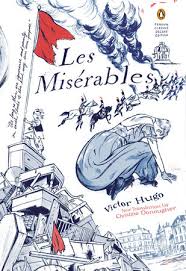Eoin Colfer is wonderful, an Irish writer, with a particularly strong case of that amazing Irish sense of humour. His sense of humour is on full display in The Legend of Spud Murphy. I saw him speak at a conference a few years ago, it was more a comedy performance than an author talk. I have been in his thrall ever since.
Spud Murphy is one of his earlier books, published in 2004. It is a chapter book for younger readers. It is particularly funny. Will and Marty Woodman are the oldest of five boys. One summer holidays they are forced against their will to join the local library. A terrifying thought because they are very frightened of the local librarian, Mrs Murphy. Mrs Murphy runs a tight ship and is said to have a spud gun behind her desk. She is a fearsome, Trunchbull-like character.
You're probably wonder what we were so scared about. I bet you're thinking that we were a pair of gutless chickens who would have been better off at home sewing our names on to handkerchiefs. But that's because you think libraries are happy colourful places, where the librarians actually like children. That may be what most of them are like, but this one was different. It was a place where serious men read serious books and nobody was allowed to show even a glimmer of a smile. A smile could get you thrown out, a titter could get you spudded. And if you laughed aloud, you were never seen again.Naturally the boys are not keen to spend their summer afternoons in the library.
We had no choice but to go inside. It was just as I feared. There was nothing in there but books. Books waiting to jump off the shelves and bore me silly.Mrs Muprhy has some fabulous tricks to keep boys in line in the library, and it is all very funny.
We couldn't fight, we couldn't shout, we couldn't make loud bodily noises. All the things young boys live for. Oh the boredom! My head felt like it would fall off and spin across the wooden floor. I tried everything to entertain myself. Watching movies in my head, following the pattern in my carpet prison, eating strips of paper from the books. But most of all, I just dreamed of freedom."Then one day something strange happened."
Fabulous.























